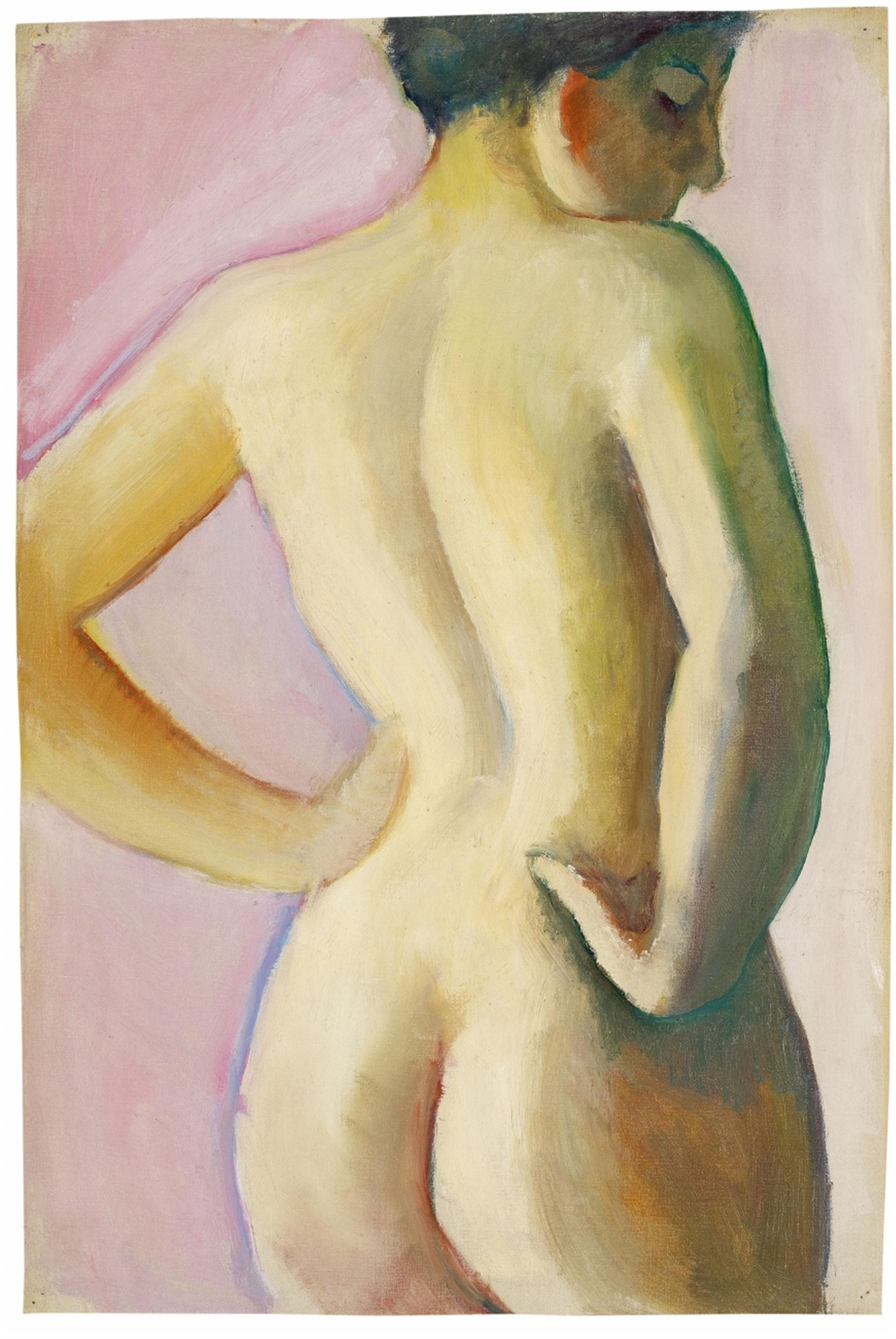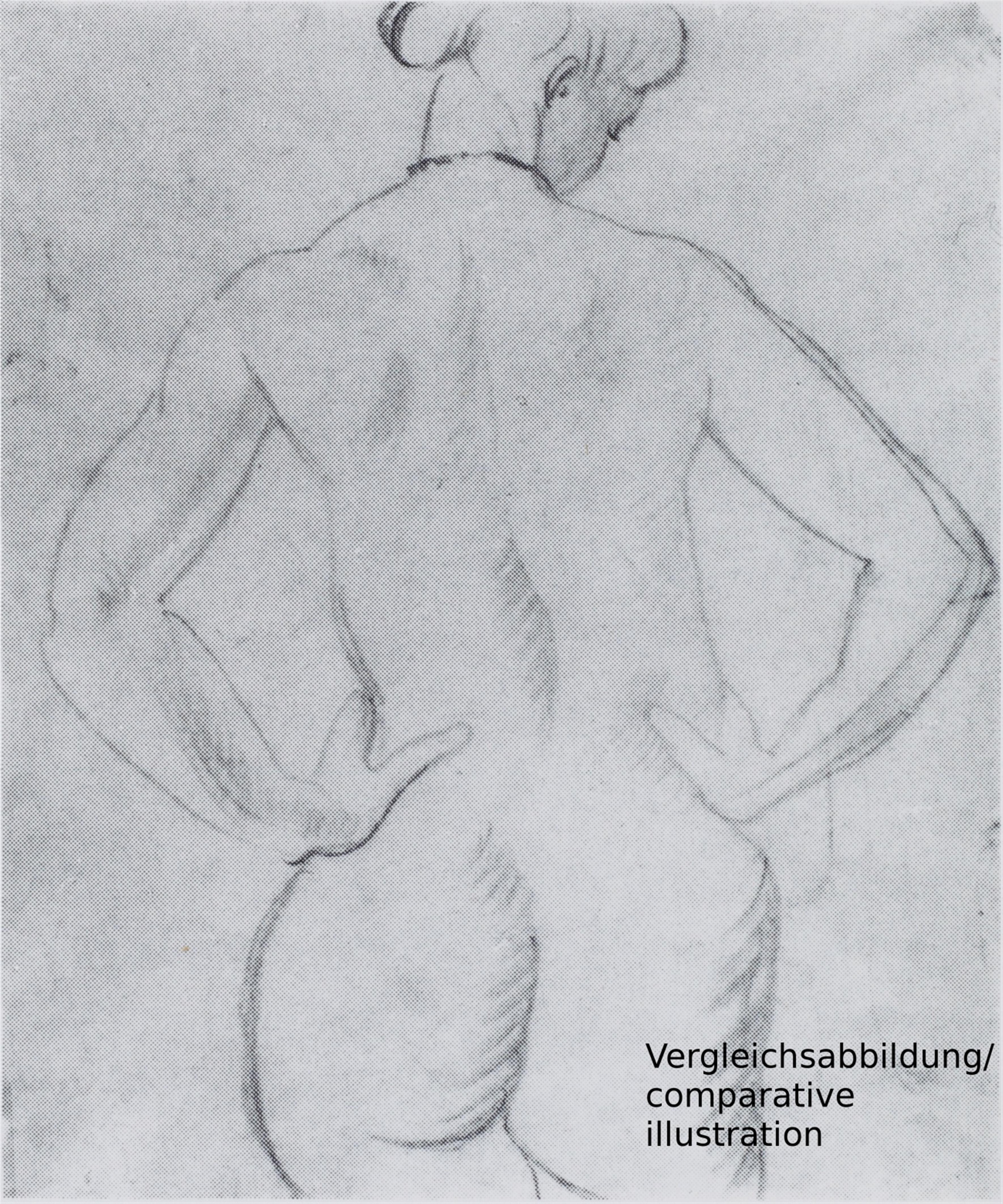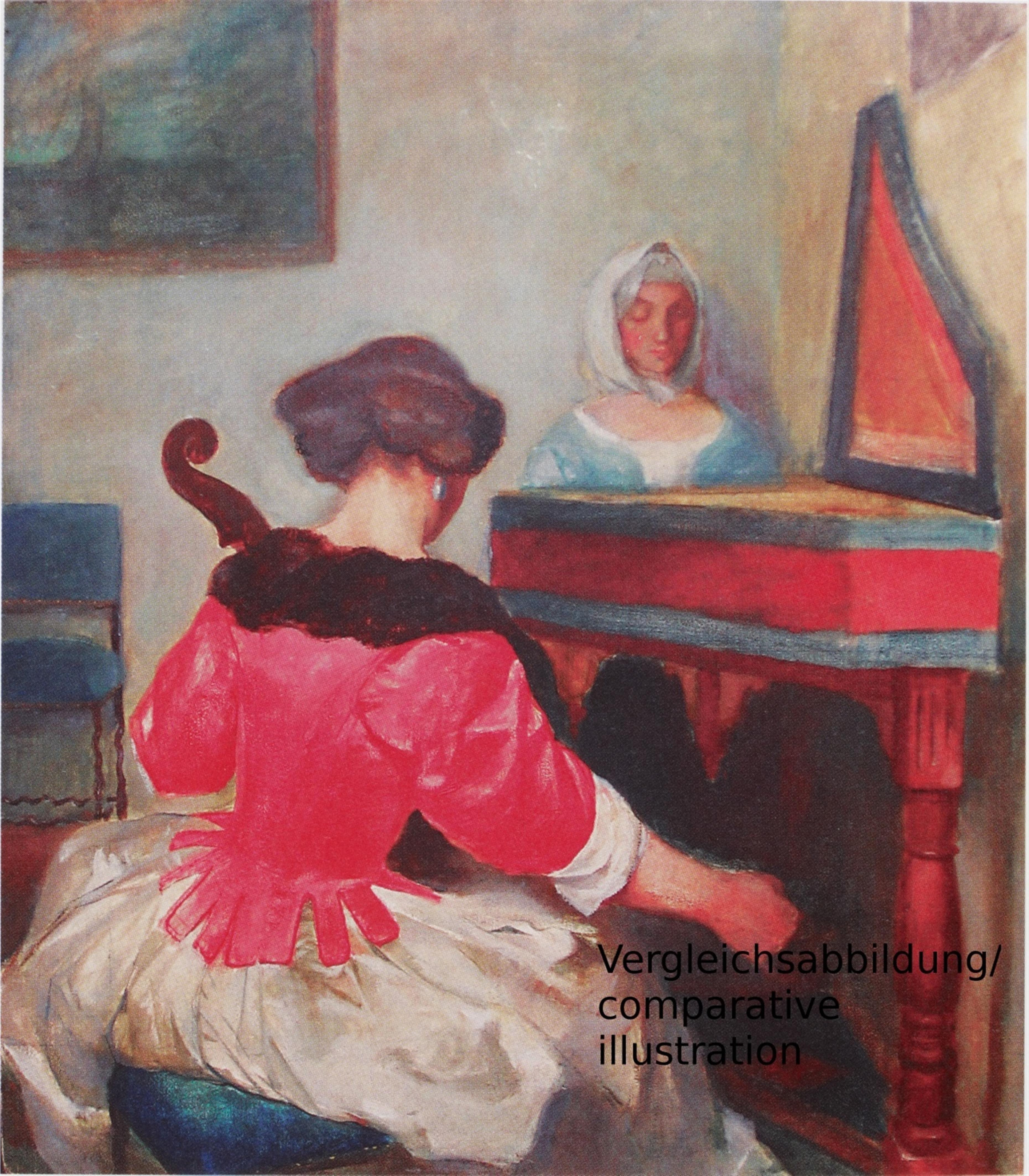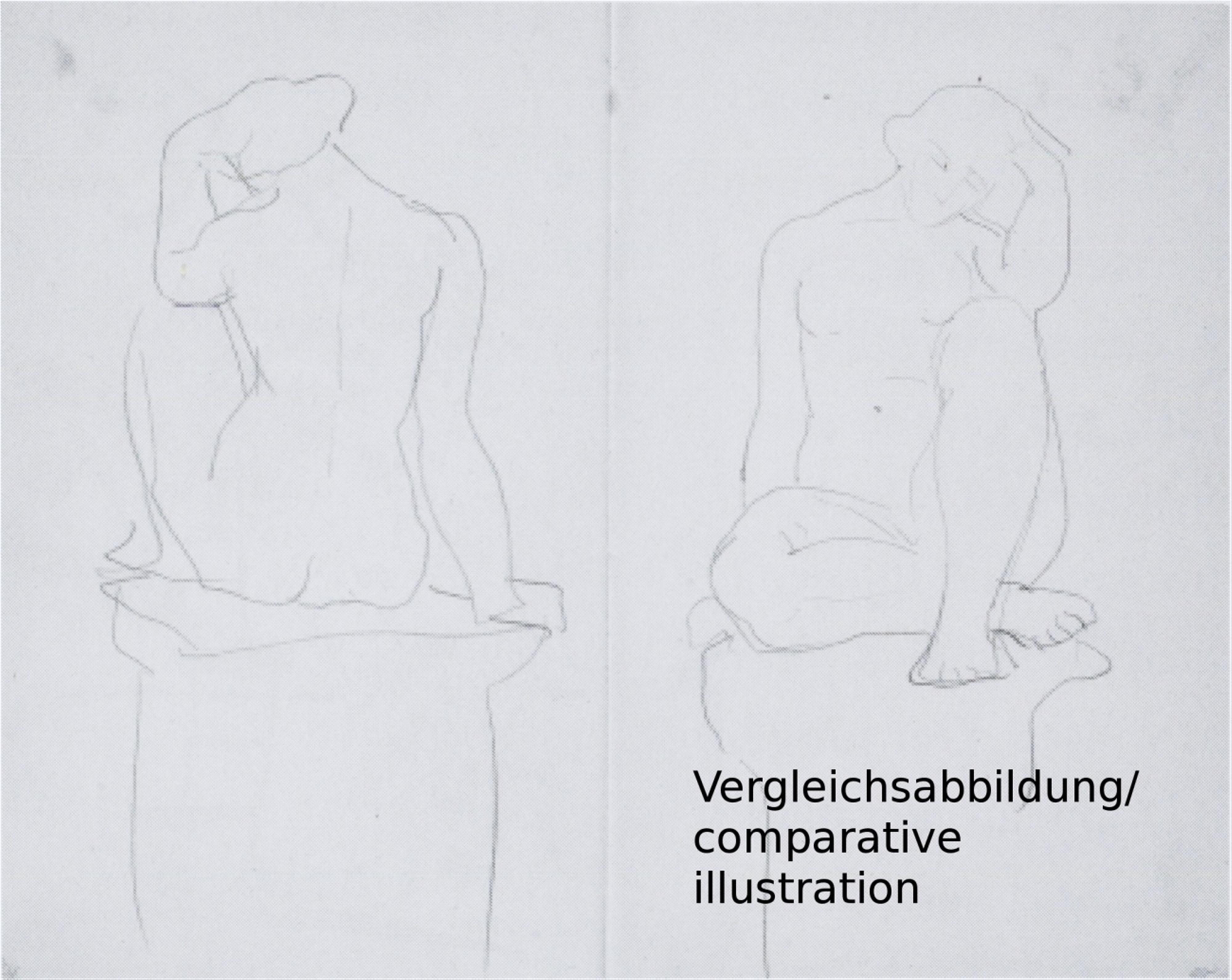August Macke
Weiblicher Akt von rückwärts auf rosa Grund
1911
Oil on canvas, relined on rougher canvas at an earlier time (58.3 x 39.5 cm) 55.9/56.7 x 37/37.8 cm Framed. Unsigned. - Verso with the oval estate stamp "Nachlass AUGUST MACKE" center on the relined canvas and left on the stretcher. - The painting support a fine canvas, slightly irregularly trimmed in upper and lower margins with thumbtack traces in the corners.
There is a similar drawing by August Macke from 1911 (Heiderich 679), which is related to the motif of this nude viewed from behind, but the following general statement about a characteristic observed by the editor of the catalogue raisonné is probably of more interest and substance: “The figure seen from behind, with the face in a three-quarter profile turned away from the viewer and showing only one cheek, is among the favoured views of the human figure in August Macke's oeuvre.” Beginning with the artist's early copy of Gerard ter Borch's painting “The Concert”, which had fascinated him, Ursula Heidereich documents a certain continuity of the motif of figures seen from behind in Macke's oeuvre, especially in the amplified, also abstract pictorial compositions extending into the year 1914. Details such as the inclination of the head and the lowered gaze may also be considered very characteristic of Macke (cf. U. Heiderich, Mein August Macke, in: August Macke ganz privat, op. cit., p. 47).
According to information kindly provided by Ursula Heiderich, this nude may depict not Elisabeth Macke but another female model. However, the identification cannot be certain and does not seem to be of primary importance in the present image, regardless of the fact that the general type of the woman, with her dark hair set off to great effect against the light tone of the overall composition, may resemble Elisabeth. The full figure and curves of the nude recall the art of the French sculptor Aristide Maillol: August Macke is documented to have already seen his work as early as 1908 (sketch sheet after “La Méditerranée”, see comparative illus.). Furthermore, in other depictions of nudes from the year 1911, this motivic link to Macke's work is even clearer. What is nonetheless remarkable here in the present nude on a pink ground is the heavily shadowed profile that, mask-like and developed out of colour, displays new painterly and semi-abstract qualities.
In this portrait from behind, the contours in various colours caressingly surround the figure, which - in the beautiful lines of the body - delicately stands out before the background. The choice and combination of colours in this work altogether demonstrate an extreme sensibility. Thus in these years it may not have been only his conscious awareness of French Fauvism and Post-Impressionism or also his occupation with the colour theories of a figure like Paul Sérusier that played an important role for Macke. The artistry and the magic of an adored old master like ter Borch, about whose use of colour Macke had taken precise notes, continued to have a latent effect. His fine painterly sense of colour had been awakened and, from then on, it decisively defined his oeuvre and his concept of the “modern” painting.
Catalogue Raisonné
Heiderich 303; Vriesen 253
Certificate
We would like to thank Ursula Heiderich, Syke, for kind additional information.
Provenance
The artist's estate; Private possession
Literature
Gustav Vriesen, August Macke, Stuttgart 1953, no. 253, p. 281 (n. illus.); Gustav Vriesen, August Macke, Stuttgart 1957 (revised catalogue raisonné), no. 253 with illus. p. 321; exhib. cat. Stade/ Freiburg/ Bonn, August Macke ganz privat, Akte, p. 74 with colour illus.; exhib. cat. Tampere (Finnland), Expressions, Sara Hildén Kunstmuseum 2012/2013, p. 137 with colour illus. p. 103; exhib. cat. Bonn 2000, Kontemplation und Glück, August Mackes Menschenbild, August Macke Haus, p. 17
Exhibitions
Bonn 2000 (August Macke Haus), Kontemplation und Glück, August Mackes Menschenbild, p. 102 with illus. p. 16; Stade/ Freiburg/ Bonn 2009 - 2011 (Kunsthaus Stade/ Museum für Neue Kunst Freibrug/ August Macke Haus Bonn), August Macke ganz privat, Eine Reinse durch das Leben von August Macke; Paris 2011/2012 (Pinacothèque de Paris), Expressionismus & Expressionismi, Berlin-Munich 1905-1920, Der Blaue Reiter vs Brücke, cat. no. 28 wit colour illus.;Tampere (Finnland) 2012/2013 (Sara Hildén Kunstmuseum), Ekspressioita, Expressions








